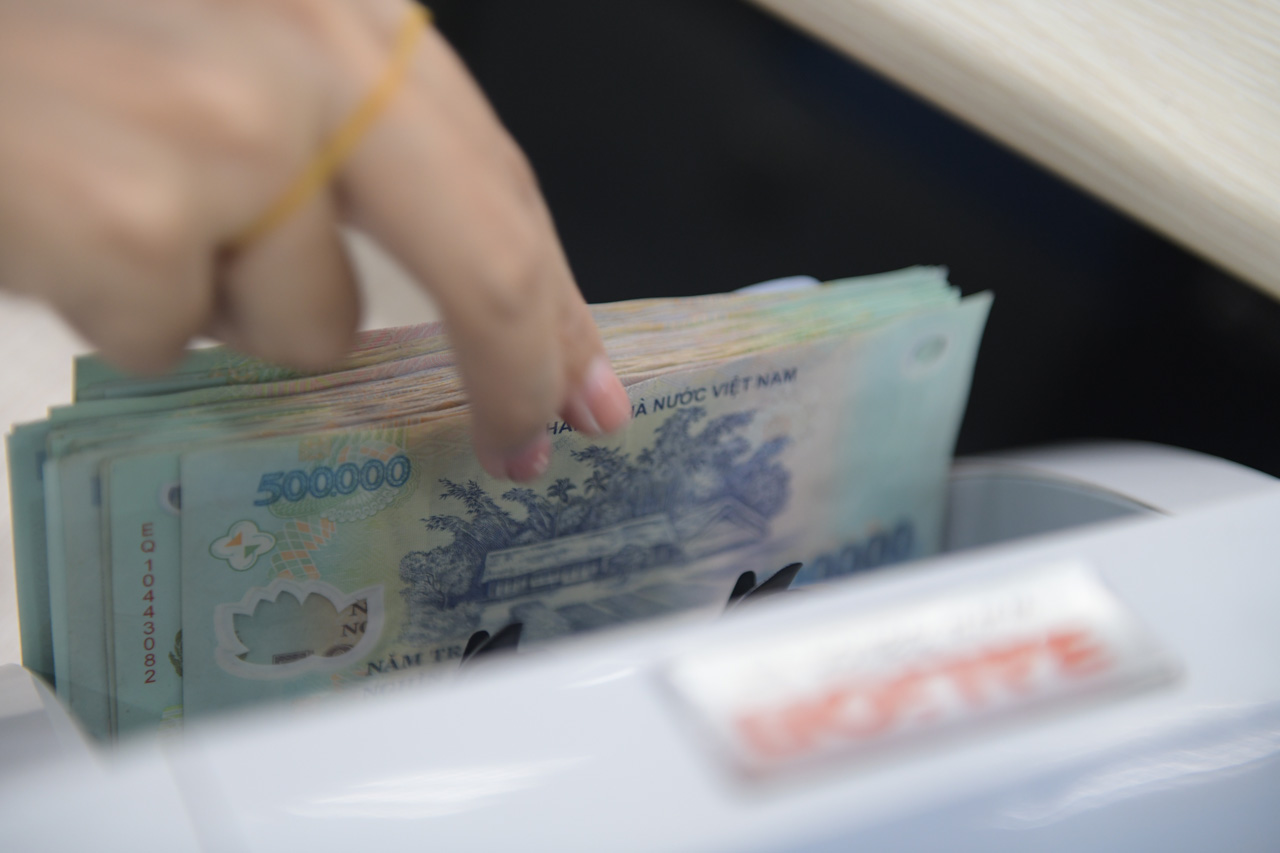Capital mobilization by credit institutions has grown at a snail’s pace and lags behind credit growth quotas despite consecutively increasing interest rates since early this year. What are the factors that have been impacting the bank deposit flow?
The number of depositors plateaus
Though credit growth quotas rose by 10.54% in the year through September 20, capital mobilization by credit institutions only edged up a mere 4.04%, close to the figure of the same period last year, at 4.28%.
The rate of capital mobilization by credit institutions over the past two years plunged compared to the growth rate of 7.7% in 2020, 8.7% in 2019 and 9.15% in 2018.
It even went down some 50 basis points versus the growth rate of 4.51% on June 30. The reasons for the capital mobilization growth decrease in the third quarter are confusing, given that deposit rates have been hiked repeatedly since the beginning of the year. Recently, the State Bank of Vietnam (SBV) raised interest rate caps on savings rates for tenors of fewer than six months by one percentage point.
The savings channel was thought to experience a boom as deposit rates rose, the real estate market remained bloomy, the stock market tumbled and the debt market tightened. However, it is necessary to know that the cash is still kept in the banking system, regardless of what industry the money channels through. If an investor withdraws money to buy a property or stocks, most of the withdrawn money is either paid via the banking system or kept in securities companies’ banking accounts. Thus, the amount of money deposited at banks, or the growth pace of capital mobilization by credit institutions, will not be affected much.
The reasons for slow growth
A comparison between the growth rate of capital mobilization and the total means of payment shows a correlation between them. According to data from the General Statistics Office (GSO), total means of payment grew by 2.49% in the year to September, down 0.81 percentage points over the second quarter and equal to the figure recorded in the first quarter. To put it another way, the total means of payment was stuck on a plateau for six months. Meanwhile, the total means of payment in nine months halved over the same period last year, at 4.95%, and was way lower than the figure in 2020, 2019 and 2018 at 7.74%, 8.84% and 8.74%, respectively.
The GSO calculated the total means of payment using cash circulating outside the banking system, deposits at domestic and foreign banks, valuable papers issued in Vietnamese dong or foreign currencies to Vietnamese organizations and individuals.
The SBV has strengthened control over the total means of payment due to soaring inflationary pressures since the beginning of the year.
According to the latest figures of SBV, the total means of payment rose by 3.78% in the year through June 30, with a bank deposit growth of 4.77% but money in circulation down 3.91% over the start of the year. It is obvious that the low money supply has hindered the growth of capital mobilization.
The second factor may come from valuable papers, which were issued by banks included in the calculation method of total means of payment, as they are soon due. In 2019-2020, many banks issued bonds with tenors from two to three years to improve the ratios of short-term capital used to make medium and long-term loans. That said, the additional bonds issued by banks from January outnumbered those soon due.
The third factor may be the instability of the balance of payments and a tendency toward tight monetary policy among many countries. Earlier, Vietnam’s interest rates looked attractive compared to other economies, thereby enabling a carry trade, which borrows currencies from countries with low-interest rates and then exchanges them for Vietnamese dong to invest or deposit the amount at banks offering higher rates. The strategy also attracts money from workers and the remittance of Vietnamese people who are living abroad. However, many central banks in the world have raised their interest rates in the year so far, making Vietnam’s rates less attractive.
Take the U.S., for example, the Federal Reserve has hiked interest rates for the fifth straight time since January, the latest three of which rose interest rates by 0.75 percentage points, raising the country’s key interest rates by three percentage points. Meanwhile, the SBV increased only one percentage point on September 22. The interest rate gap between Vietnam and the U.S. has narrowed significantly, and the same thing happened in European and other Asian countries.

Previously, many people, including overseas Vietnamese, could transfer money to Vietnam for investment or bank deposits due to low-interest rates in the country they were residing in, but the current situation shows the other way around. The change may be reflected in recent fluctuations in the foreign exchange market with the exchange rate tension between the Vietnamese dong and the U.S. dollar. Recently, cash flowing to developed countries such as the U.S. has been prevalent among many other countries.
According to Vietnam’s economic data for international balance of payments updated on June 30, the item of “net errors and omissions” in the second quarter of 2022 alone amounted to US$8,979 million, nearly 3.8 times higher than the figure in the previous quarter, at US$2,372 million. The figure has accumulated up to US$ US$11,351 in the first half of this year, higher than the entire year’s figure over the past three years, ranging around US$7000-8000.
The net errors and omissions may result from hoarding foreign currency, misrepresentation of trade deficit caused by smuggled imports, or illegal money transfers to foreign countries.
Recently, there have been cases of illegally transferring money abroad and amassing U.S. dollars in commercial banks and then selling them on the black market. They may be the cause of the shift in capital flows, hindering the banking system’s capital mobilization growth.









